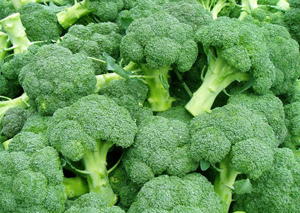Jun 16: According to researchers, broccoli may help people with type 2 diabetes manage their blood sugar levels. To keep you blood sugar levels in check, it is good to switch to foods that are high in fiber and vitamins.
They should also have a low glycemic index score which means that they won't cause sudden spikes in your blood sugar levels. Broccoli fulfills all these parameters which naturally makes it a superfood for diabetics, but this latest research has something more to add to it.
The humble broccoli, which is often disliked by many people for being boring, is now being touted as a superfood vegetable. It stands out as one of the best sources of Vitamin C (more than oranges!), full of fiber and phytochemicals, low in calories and is also rich in calcium.
Broccoli is good for your heart and has become popular for its anti-cancer properties. A new study, published in the journal Science Translational Medicine, shows that it may have some health benefits for diabetics too.
The study indicates that broccoli contains a compound called sulforaphane which may help reverse the disease signature. Experiments were conducted on rats and they showed that this compound reduced glucose production by liver cells that were growing in culture and shifted the liver gene expression away from a diseased state in the rats with diabetes.
The team constructed a signature for Type 2 diabetes based on 50 genes and then used publically available expression data sets to screen 3,852 compounds for drugs that potentially reverse the disease.
Sulforaphane was provided as concentrated broccoli sprout extract to 97 obese patients with type 2 diabetes during a 12-week randomised placebo-controlled trial. The results showed that it significantly reduced fasting blood glucose and glycated hemoglobin (HbA1c).
The researchers, therefore, conclude that broccoli may act as a secret weapon against diabetes. Previous studies have shown that sulforaphane encourages production of enzymes that protect the blood vessels which can also help in reducing the risk of cardiovascular diseases such as heart attacks and strokes in diabetics which are common side-effects of the ailment.





Comments
Add new comment